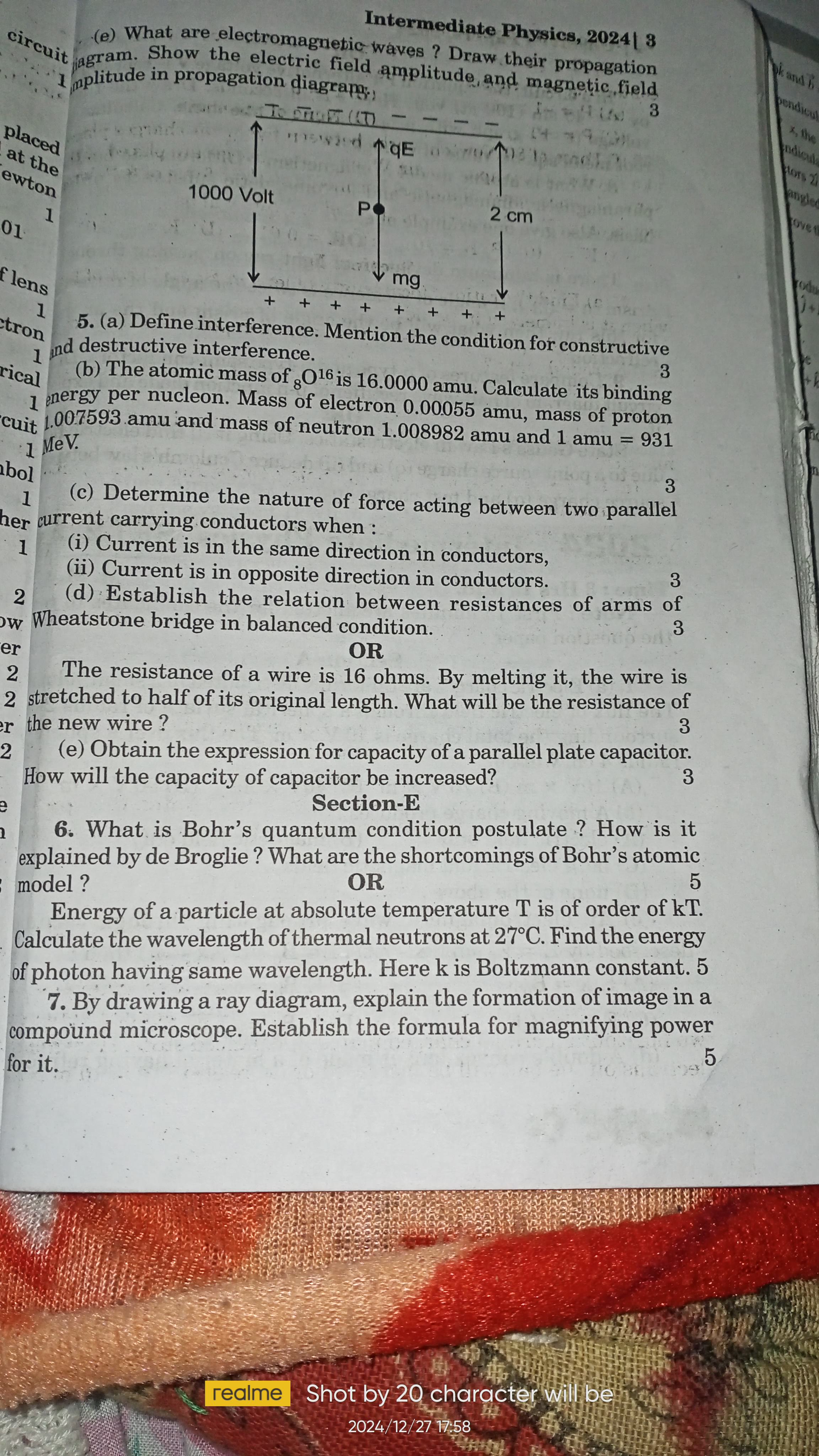a) What are electromagnetic waves? Draw their propagation diagram. Show the electric field amplitude and magnetic field amplitude in the propagation diagram. b) The atomic mass of... a) What are electromagnetic waves? Draw their propagation diagram. Show the electric field amplitude and magnetic field amplitude in the propagation diagram. b) The atomic mass of 8^16 is 16.0000 amu. Calculate its binding energy per nucleon. Mass of electron is 0.00055 amu, mass of proton is 0.007593 amu and mass of neutron is 1.008982 amu and 1 amu = 931 MeV. c) Determine the nature of force acting between two parallel current-carrying conductors when: i) Current is in the same direction in conductors, ii) Current is in opposite direction in conductors. d) Establish the relation between resistances of arms of Wheatstone bridge in balanced condition. The resistance of a wire is 16 ohms. By melting it, the wire is stretched to half of its original length. What will be the resistance of the new wire? e) Obtain the expression for the capacity of a parallel plate capacitor. How will the capacity of the capacitor be increased? What is Bohr's quantum condition postulate? How is it explained by de Broglie? What are the shortcomings of Bohr's atomic model? Explain the formation of an image in a compound microscope and establish the formula for the magnifying power for it.

Understand the Problem
The question set contains various physics problems related to electromagnetic waves, atomic mass, resistance, and quantum mechanics. Each part asks for specific explanations, calculations, or diagrams to illustrate concepts in physics.
Answer
Electromagnetic waves have perpendicular electric and magnetic fields. Binding energy per nucleon for 8^16 is 7.976 MeV. Currents in the same direction attract; opposite repel. The resistance becomes 32 ohms for a stretched wire.
Electromagnetic waves consist of oscillating electric and magnetic fields perpendicular to each other and the direction of propagation. The binding energy per nucleon of 8^16 is 7.976 MeV. Same direction currents attract; opposite direction currents repel. For a stretched wire, resistance doubles to 32 ohms.
Answer for screen readers
Electromagnetic waves consist of oscillating electric and magnetic fields perpendicular to each other and the direction of propagation. The binding energy per nucleon of 8^16 is 7.976 MeV. Same direction currents attract; opposite direction currents repel. For a stretched wire, resistance doubles to 32 ohms.
More Information
Electromagnetic waves are essential for transmitting energy across space. The calculation of nuclear binding energy is crucial in nuclear physics, and the interaction between conductors helps understand fundamental electromagnetic forces.
Tips
When calculating binding energy, ensure to subtract the mass defect appropriately before converting to energy units. For resistance calculations, remember that doubling the length with the same volume changes the resistance proportionally.
Sources
- Electromagnetic spectrum - Wikipedia - en.wikipedia.org
- Worked example: Propagation of EM waves | Physics | Khan Academy - youtube.com
AI-generated content may contain errors. Please verify critical information